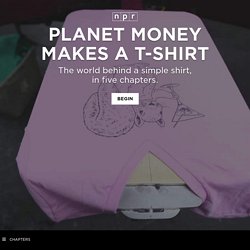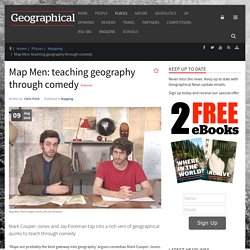

Unit 1 - Intro to Human Geo. Historic Aerials: Viewer. We admit it, websites can be confusing. Especially sites as unique as Historic Aerials. If you haven't worked any mapping websites, operation might not be obvious to you. To help you scale this short (we hope) learning curve, we have compiled this list of common tasks. We also encourage you to explore. Move the mouse around and try clicking on things. Note that this is an interactive guide. Let's get started! Navigation Chances are, you aren't interested in the area we present to you by default.
To move the map, drag it by clicking and holding down the left mouse button (or only mouse button if on a Mac.) That's all well and good you say, but the world is a big place. The text search box works for street addresses, cities, and even landmarks. Zoom On the upper left side of the viewer content area are the zoom controls, indicated by the plus (+) and minus (-) sign.
Refugee Stories: Mapping a Crisis - The Choices Program. Objectives Students will: Explore the human geography of the current refugee crisis.Employ data to create a map of the crisis.Examine one refugee’s story and use it to map his or her experiences.Consider challenges facing the international community and weigh responses to the crisis.

Resources Handout – Key Terms. APHUGE 2016-2017 – Google Drive. Planet Money Makes A T-Shirt. Why A T-Shirt?

We wanted to see the hidden world behind clothes sold in this country, so we decided to make a T-shirt. We wanted to make an ordinary shirt like the vast majority of the shirts sold in this country — not organic cotton, not hand-sewn in the United States. To figure out how many shirts to make, and to raise money to pay for them, we turned to Kickstarter. Our goal was to sell 2,000 shirts. In the end, we sold 25,000. (Thanks again to everyone who ordered a shirt. Why A Squirrel? The design on the shirt, a squirrel hoisting a martini glass, is a visual pun: a reference to the phrase “animal spirits” made famous by the economist John Maynard Keynes.
Home. Map Men: teaching geography through comedy. Mark Cooper-Jones and Jay Foreman tap into a rich vein of geographical quirks to teach through comedy ‘Maps are probably the best gateway into geography,’ argues comedian Mark Cooper-Jones.

‘They have become trendy, and cool. People are even putting them up on their walls.’ For any geography teacher looking for ways to make the world’s many maps, and the various strange geographical oddities they portray, funny and yet still educational, they should definitely watch Map Men. Short, snappy videos produced and presented by comedian map-fans Cooper-Jones and Jay Foreman, Map Men explores interesting stories about maps from the UK and overseas, merging snippets of educational information with quick-fire jokes and sketches.
‘Comedy is the thing that makes them clickable,’ observes Cooper-Jones. The YouTube series covers a wide range of subjects, such as the UK’s north-south divide, the India-Bangladesh enclave situation, and the famous Hereford Mappa Mundi. AP Human Geography Resources – Google Drive. Search › ap human geography. AP® Human Geo - iScore5: The App built by expert teachers for savvy students. 'American Panorama' Is a Historical Atlas for the 21st Century. When Charles Paullin’s Atlas of the Historical Geography of the United States first appeared in 1932, it was hailed as a “monument to historical scholarship.”

Its 700 maps traced nearly every dimension of American life across the country’s geographical bounds—its natural history, its settlement by Europeans, the spread of railroads, state boundaries, suffrage, and much else. Paullin, a naval historian, hoped his meticulous research and beautiful renderings would inspire new research into history’s old narratives. They did. Mr elrods aphg. The True Size Of ... AP HuGe 2015-2016 Teacher Question Bank - Google Sheets.
Flipping HGAP - Course. Westmont AP Human Geography - home. Untitled. Expectant mothers in the U.S. remain at a high risk for pregnancy-related death.

(iStock) Around the globe, statistics show that as education levels for women rise, fertility levels drop. Sociologist Philip Cohen puts it this way: “Women with more education have more opportunities for productive lives doing work other than childbearing.” Some conservative writers and politicians have warned ominously that this presents a “reverse Darwinism,” and a survival of the weakest.
But a new report by the Pew Research Center has found something surprising: more highly educated women in the United States are becoming mothers than ever before. Childlessness among women age 40 to 44 is at its lowest point in a decade. “That’s a stunning turnaround,” said report author Gretchen Livingston, a senior researcher at the Pew Research Center, who analyzed fertility over a woman’s lifetime in the Census Bureau’s Current Population Survey data.
Continue reading.
Unit 3 - Culture. Unit 4 - Political Geography. Unit 5 Agriculture. Unit 6 - Industrialization & Development. Unit 7 - Urban.